Post (and illustrations!) by Elizabeth DeGraw, an undergraduate Psychology major pursuing a minor in Interdisciplinary Neuroscience at Portland State University.
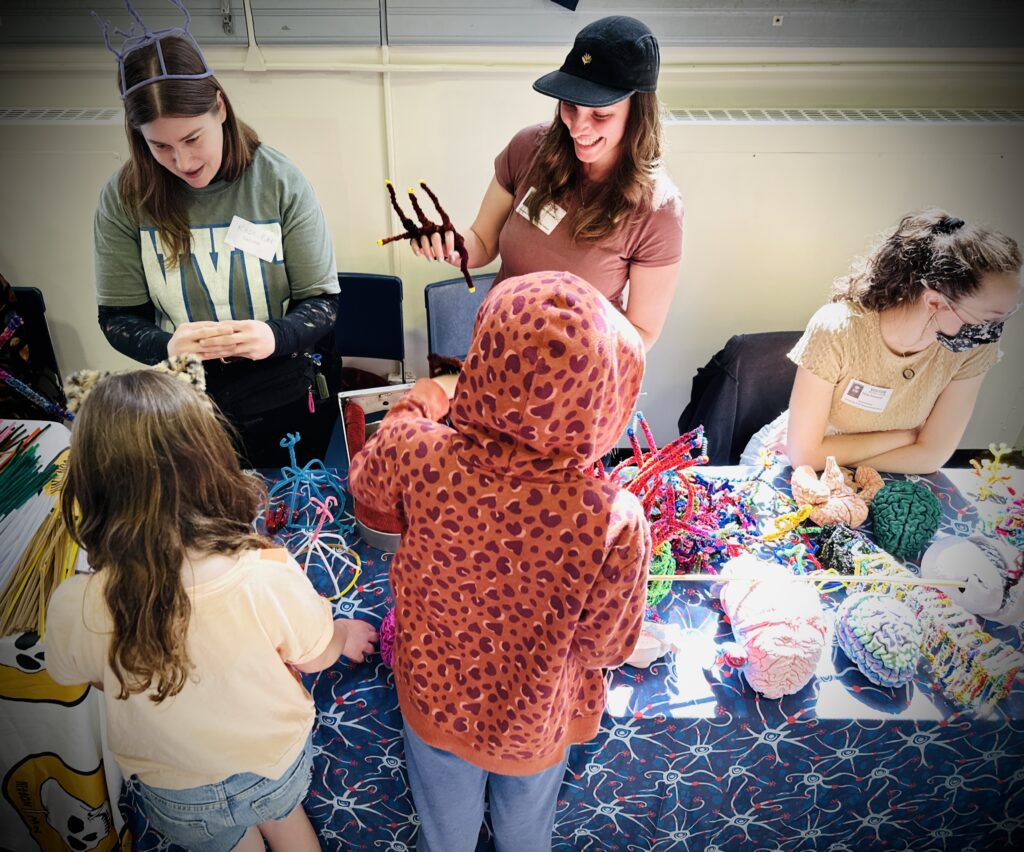
Discovering my topic, animals saved the day
As I was trying to think of a good topic to write about for this post, I was hoping to land on an idea that would bring me joy to research.
During my first visit with NW Noggin to Sunnyside Elementary, I observed the students’ reaction to Roadie, a service animal that belongs to Kadi Rae, a NW Noggin volunteer. They were completely drawn to him and were eager to pet and spend time with him. As a service animal, Roadie is trained to help identify high cortisol levels (stress hormones) in someone and responds by approaching them.
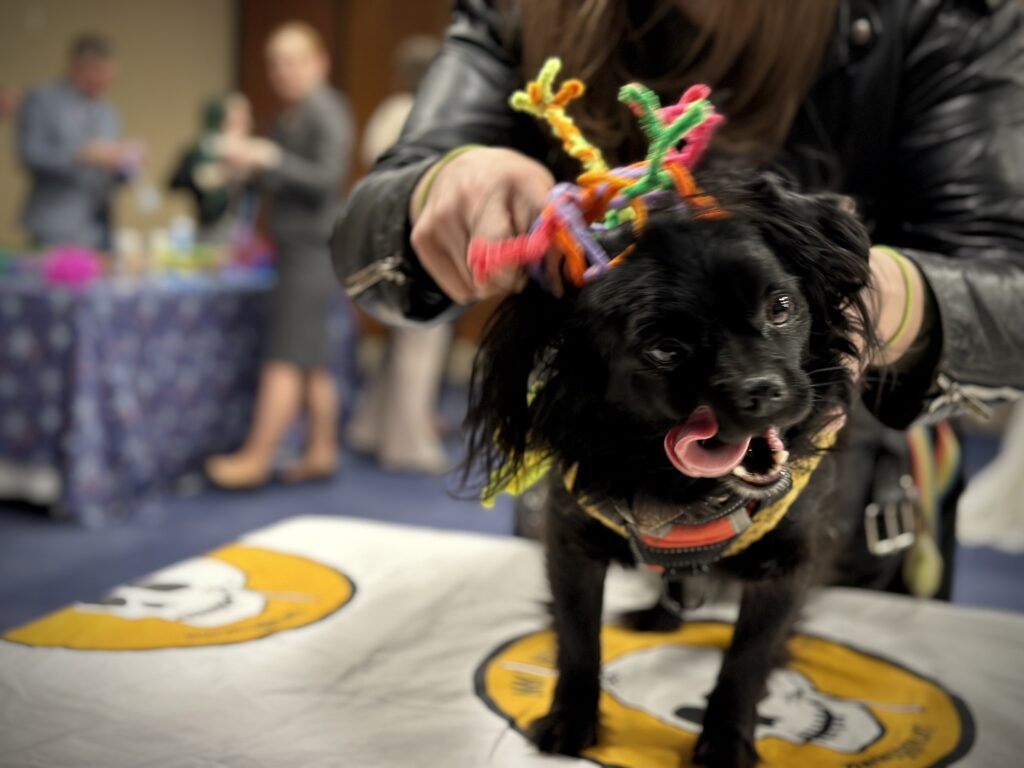
LEARN MORE: Dogs can discriminate between human baseline and psychological stress condition odours
LEARN MORE: The Untrained Response of Pet Dogs to Human Epileptic Seizures
On our next visit to Sunnyside, our friend Kadi Rae wasn’t able to join, and neither was her dog Roadie. The students immediately noticed and asked if the dog would be joining us. Their disappointment was obvious once they realized there would be only humans there to interact with, and I found this very relatable as I was also looking forward to having an animal friend nearby.

Once we got started, a student came up to the table full of animal brains we brought along, and their attention went straight to the cat brain. This led to a discussion about how amazing it is that the cat brain looks so much like the human brain, with the only initial visible difference being size. I asked the student if they had any pets, and they said they had a pet cat. We then talked about the look of their pet (cute, brown, tabby) and how sweet and cozy their kitty friend is.
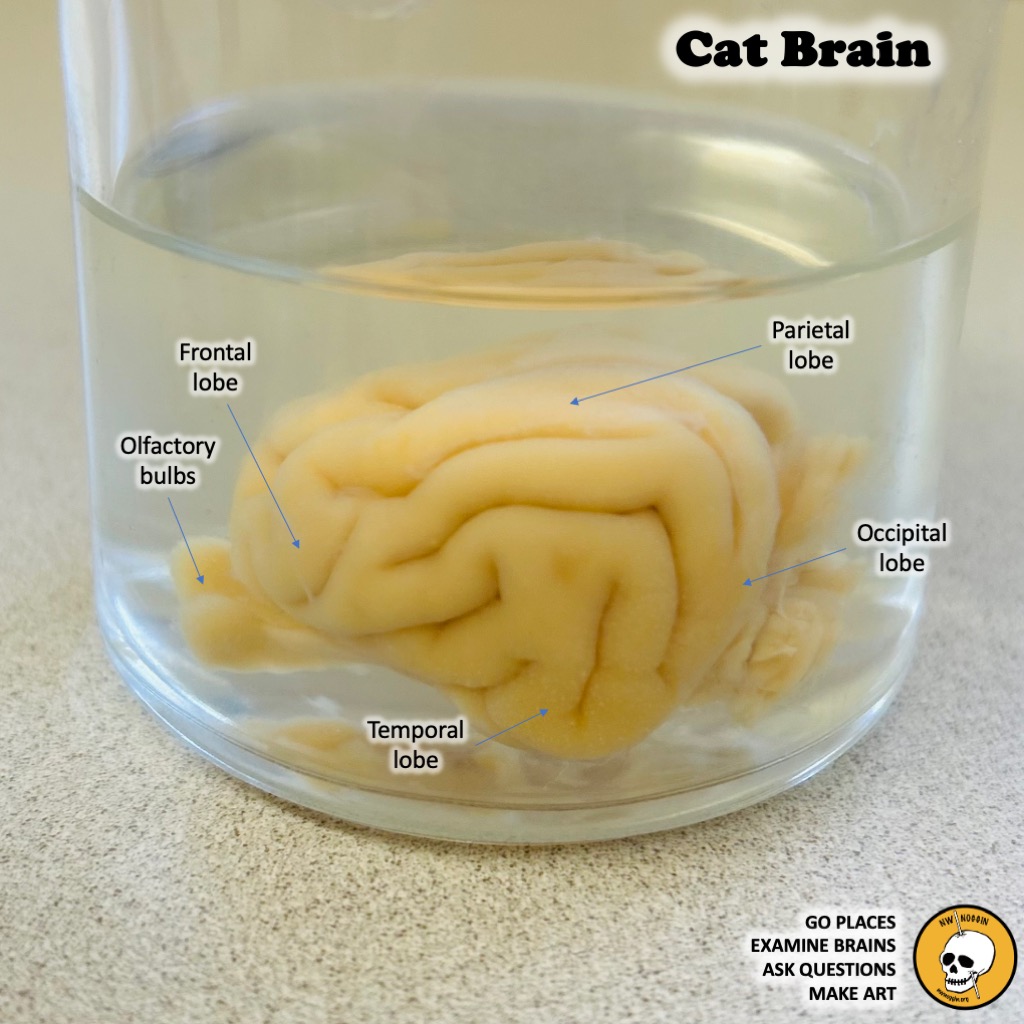
LEARN MORE: Without my amygdala, would I get scared?
As I thought back to these experiences, it led me to think about my own experience with animals, and how I have had pet cats and dogs my entire life. They have brought me nothing but joy and comfort, especially during times of stress, and I can’t imagine a life without them. I currently have a cat named Bruno, who constantly puts my mind at ease when I’m home. This made me realize how special it is that we can have this bond with animals and made me think about why this connection occurs.
Perception
When it comes to how we experience animals, so much of their attractive quality comes from our perception of them. Perception is our interpretation and experience of the world, which begins with our senses: visual, auditory, olfactory, gustatory, vestibular and somatosensory. Each one of these senses are possible because of specialized receptor cells (sensory neurons) in our peripheral nervous system that respond to physical stimuli.
Neurons are made up of dendrites (message receivers), cell bodies (command center, and source of genetic instructions), axons (which carry messages away from cell bodies), and axon terminals (which pass on electrical message in chemical form – through release of neurotransmitters). These cells take part in transduction, which is the ability to take outside information (a stimulus) and convert it into an electrical signal which is then sent to our central nervous system for processing.

For example, our ability to see is possible because of specialized cells in our eyes called photoreceptors. Photoreceptors absorb light, which is an electromagnetic wave, and convert it into a neuronal response through transduction by proteins known as photopigments, which move and dance in response to particular wavelengths, thus changing photoreceptor activity.

When light enters the pupil, it strikes the retina in the back of the eye, which is where these photoreceptor cells (rods and cones) live. Rods transduce all visible light while cones are more selective, and help us perceive color. Photoreceptor transduction allows for electrical signals to continue out of the eyes through the optic nerves (via intervening synapses with bipolar and ganglion cells) to the brain.

LEARN MORE: Phototransduction in Rods and Cones
The optic nerve is a bunch of ganglion cell axons that take the visual information from the eyes and relay it to different parts of the brain. The nerve splits into two tracts at the optic chiasm, and one tract takes the information from the left side of visual space to the right side of the brain, and the other tract takes information from the right side of visual space to the left side of the brain.

A majority of both tracts synapse (send messages to other neurons) in the lateral geniculate nucleus (LGN), which is a group of cell bodies in the thalamus. From there, this information travels from the LGN to the primary visual cortex in the occipital lobe, where initial cortical interpretation takes place. This interpretation of what we are seeing helps form our perception of the visual stimuli we detect.
LEARN MORE: Perceiving
LEARN MORE: Types of Neurons
LEARN MORE: Photoreceptors at a Glance
LEARN MORE: The Multifunctional Lateral Geniculate Nucleus
Why do we think animals are cute?
Now that we understand a little perception, why do we think animals are cute?
“Kindchenschema” refers to physical characteristics, such as a round face, chubby cheeks, and big eyes, that spark our motivation to caretake due to perceived cuteness. It is also known as baby schema and is thought to be due to our mesocorticolimbic system. This system involves the release of dopamine, a neurotransmitter important for predicting reward in response to stimuli, and for motivation and emotional behavior. Dopaminergic neurons in the VTA (ventral tegmental area) in the midbrain project to parts of the limbic system and prefrontal cortex, which are involved in emotion and motivation.

So when we see a baby or animal with these types of features, our brain makes the connection that we should care for them. By caring for them, our reward system is activated. This is thought to be a survival mechanism that allows us to keep the young protected and safe. This could be why we often baby talk to animals, as it seems our brain perceives their cuteness in similar regards to how we would view a baby. We may very well be driven to take care of animals (pet and comfort them) due to their “baby-like” attractiveness, which motivates us partly through our dopaminergic pathways.

LEARN MORE: Baby Shema Modulates the Brain Reward System
LEARN MORE: Pet Face: Mechanisms Underlying Human-Animal Relationships
LEARN MORE: How Cute Things Hijack our Brains and Drive Behavior
LEARN MORE: Baby Schema in Human and Animal Faces Induces Cuteness Perception and Gaze Allocation in Children
Why does it make us feel good to be around animals?
Another concept to consider is attachment theory, which involves social and emotional factors. This theory expresses that caregivers are vital in an infant’s sense of safety; therefore, a deep bond is created between them to ensure closeness. Humans are motivated to form this type of connection, and it often leads to large release of the hormone oxytocin, which solidifies these feelings of attachment.
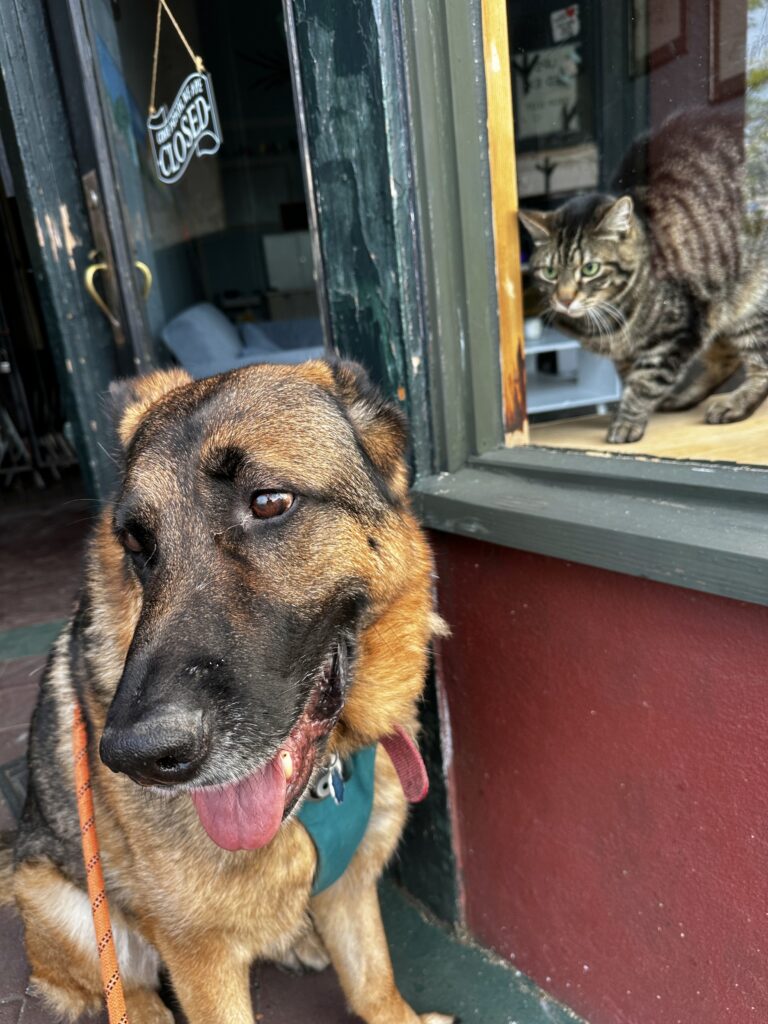
Oxytocin is produced primarily in the hypothalamus and is thought to be involved in attentional modulation (what to attend to versus what not to attend to), which is related to neuroplasticity (our brain’s ability to change and adapt). It’s also released during labor and childbirth, and is linked to lactation and bonding between parent and child.
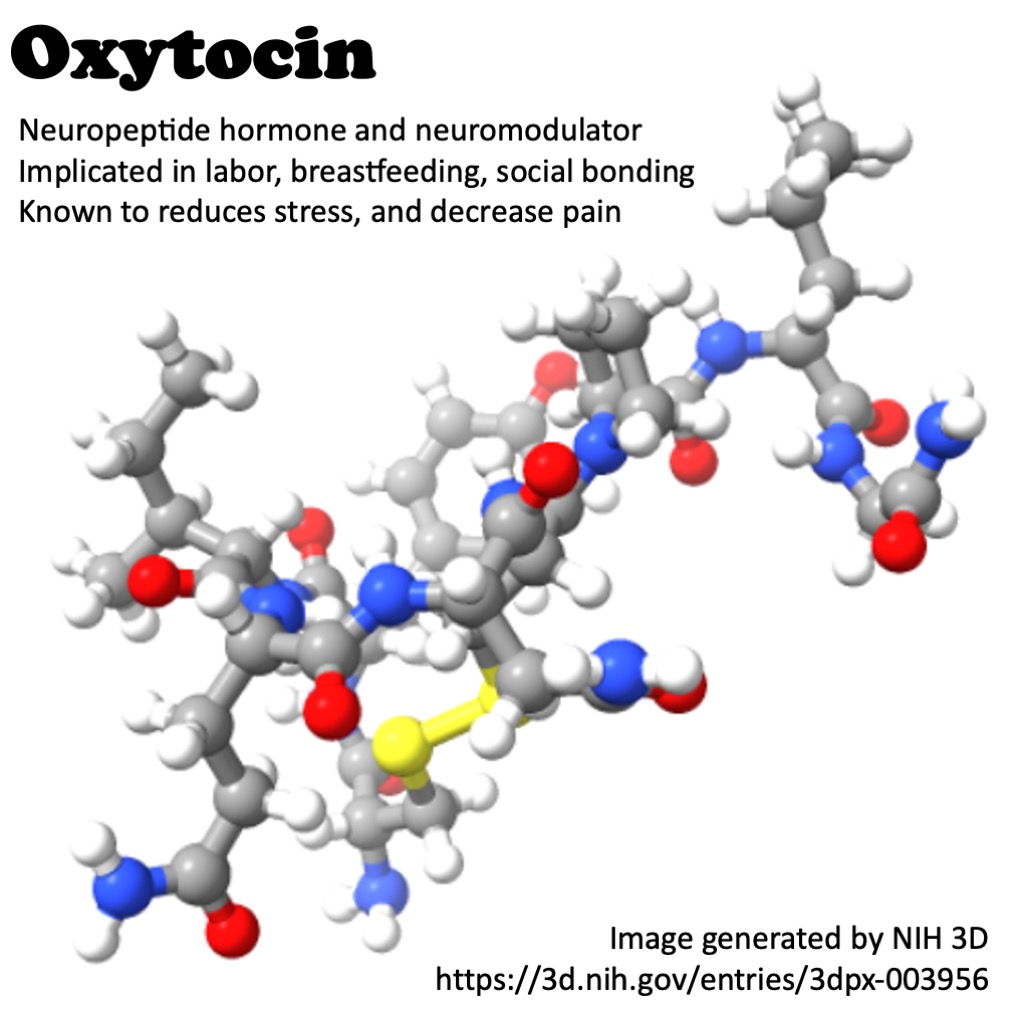
YOU CAN 3D PRINT THIS: Oxytocin (from the National Institutes of Health)
Oxytocin is popularly known as the “cuddle hormone,” as affectionate touch leads to its release which might cause you to feel all warm and cozy. This not only occurs in human-human relationships, but with our sweet animal friends as well when we cuddle them. This increase in oxytocin during human-animal interactions helps explain why we often feel so close to our pets.

LEARN MORE: The neurobiology of attachment
LEARN MORE: Attachment Theory in Psychology
LEARN MORE: Animals and Attachment Theory
LEARN MORE: Neuroscience: The Hard Science of Oxytocin
LEARN MORE: Oxytocin, Neural Plasticity, and Social Behavior
LEARN MORE: Oxytocin promotes social bonding in dogs
LEARN MORE: Neurophysiological correlates of affiliative behaviour between humans and dogs
LEARN MORE: Dog’s gaze at its owner increases owner’s urinary oxytocin during social interaction
LEARN MORE: Oxytocin-gaze positive loop and the coevolution of human-dog bonds
LEARN MORE: An Examination of Changes in Oxytocin Levels in Men and Women Before and After Interaction With a Bonded Dog
Why is it important to feel good?
The health of an individual relies on balance within the body, and prolonged stress can lead to an imbalance. Your body responds to stress in a variety of ways. Initially, the sympathetic nervous system is activated and releases hormones such as norepinephrine and epinephrine to prepare the body for its “fight or flight” response. Your heart rate increases and glucose is released into the bloodstream.
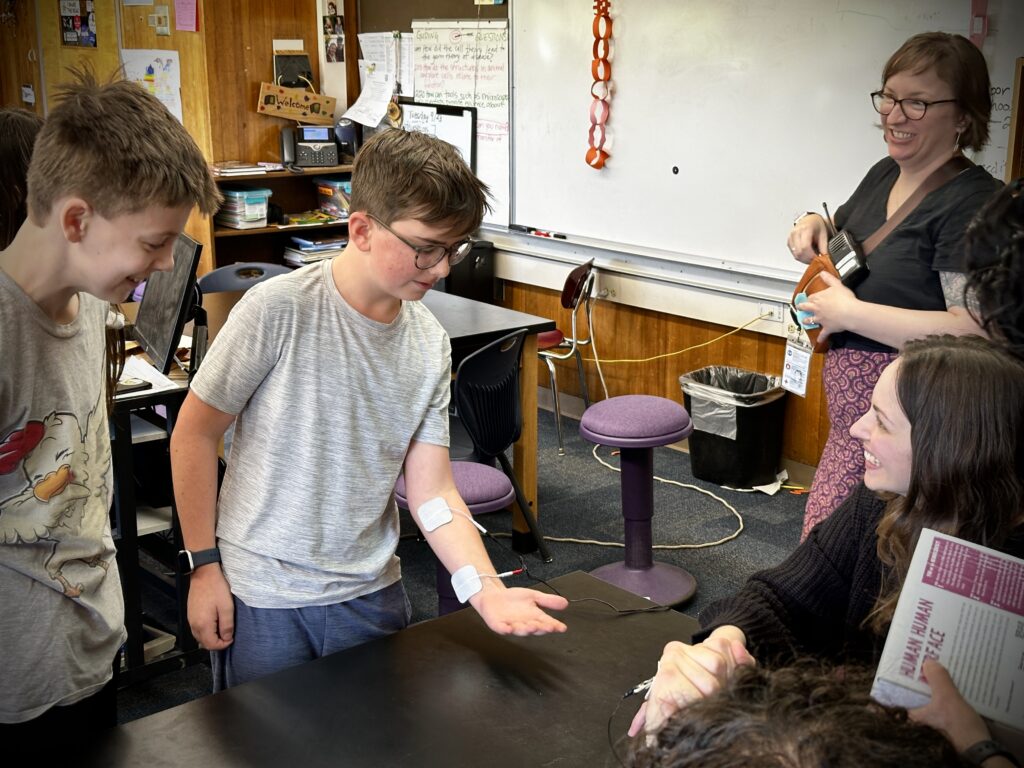
Cortisol, a steroid hormone produced by the adrenal glands, is then released, and impacts almost every organ in the body. When the body has a healthy amount of cortisol, it helps regulates stress, blood pressure and blood sugar, helps manage our sleep-wake cycle, suppresses inflammation, and helps control metabolism. Yet when the body is exposed to prolonged stress, cortisol floods the body and does more harm than good.
When cortisol levels are too high for too long, the HPA axis (which regulates the release of stress hormones) is less responsive and can’t maintain homeostasis within the body. This causes the adrenal glands to overproduce stress hormones over and over again. This leads to chronic inflammation and a compromised immune system, as well as risks to our mental health.

LEARN MORE: A Comprehensive Overview on Stress Neurobiology
LEARN MORE: Mental Health is the Health of the Whole Body
LEARN MORE: Understanding the Stress Response
LEARN MORE: Chronic Stress, Cortisol Dysfunction, and Pain
LEARN MORE: Correlation Between Cortisol and Serotonin Uptake
How animals can help with stress
While stress is a natural part of life, in order to maintain healthy levels, we need to find ways to buffer the negative consequences that often come along with it. A study focusing on the benefits of pets discussed how pets are often seen in the same light as a non-judgmental friend and can offer social support to their owners. This can lead to lower blood pressure, help with stress management, and increase oxytocin (that cuddle-hormone mentioned before).
Research has also shown that children with animals have lower levels of anxiety, as they provide them with comfort and a sense of security.

“Having a pet makes me feel cozy, relaxed, and really safe. When I felt stressed about state testing at school, I cuddled Bruno and felt better. I love when Bruno sleeps in my room, because when I go to bed sometimes, I feel scared and lonely, but having him nearby helps me calm down and feel safe.”
— Kjell Perry, age 9
There have also been studies that show a decrease in cortisol levels in relation to animal interaction.
From Kadi Rae Smith, NW Noggin volunteer:
”Roadie is trained to signal when stress hormones are elevated (most notably for cortisol). When someone is having a panic attack, or any sort of acute stress reaction, Roadie signals with a paw on the leg (if standing) or arm (if sitting). It is generally very calming for people that interact with Roadie. Most of his experience with signaling has been with youths at our outreach programs and elder folks, specifically veterans...”

“…for me, his primary function is seizure signaling, wherein he alerts me before I have a seizure by pawing the back of my leg. This is very important because he is the only indicator that I have for the onset of the daily sporadic seizures that I experience. It is an amazing support having Roadie by my side each day. Without him I had a very hard time leaving the house due to the sporadic seizures, so he really facilitates freedom and safety for me, as well as just being a sweet natured pup.”
LEARN MORE: Are Pets a Healthy Pleasure? The Influence of Pets on Blood Pressure
LEARN MORE: Pet Ownership is Associated with Greater Cognitive and Brain Health
LEARN MORE: Oxytocin, a Mediator of Anti-Stress, Well-Being, Social Interaction, Growth and Healing
LEARN MORE: Pet Dogs and Children’s Health: Opportunities for Chronic Disease Prevention?
Do we make animals feel good too?
When it comes to my own cat’s emotions, it’s clear to me that he seeks love and attention as much as I do, and he appears happy when he gets it. Studies show that when cats are separated from their owner, they experience distress, which is evident through their vocalized expression (meowing). This shows that cats depend on their caregiver for safety, which is in line with attachment theory. Dogs experience this as well and show preference in being close to their human companions, while also seeking them out in unfamiliar environments. It appears that while animals help us feel calm, we often do the same for them.
LEARN MORE: Intraspecific and Interspecific Attachment between Cohabitant Dogs & Humans
LEARN MORE: A Scientific Look at the Human-Animal Bond
LEARN MORE: Attachment Bonds Between Domestic Cats and Humans
LEARN MORE: The Power of the Human-Animal Bond

Experiencing the benefits of animals first hand
On a recent NW Noggin outreach visit to the MacLaren Youth Correctional Facility, we had the opportunity to learn about an incredible program called Project Pooch. Their space included a well maintained kennel, an outdoor area, and an indoor training facility equipped with agility tools for shelter dogs. Project Pooch allows for youth at the facility to care for and train animals in order to help prepare them for adoption.

Klondike is a beautiful Siberian Husky up for ADOPTION!
Project Pooch practices Fear Free training, and positive reinforcement (not punishment) which prioritizes the emotional and physical well being of the animals. As we talked with the youth, it was clear that they felt proud of the work they did with the dogs. In addition to learning valuable skills, these young people also earn various animal training certifications while working with the program.
Research shows that the training is effective, and that youth learn patience, empathy, and relationship skills while working with Project Pooch. These benefits are clear indicators of how valuable animals are in our lives, as they often provide comfort and a sense of companionship.
Developing these bonds during training potentially encourages oxytocin release, which can promote bonding and empathy. Research also shows that cortisol levels in the dogs drop during their interaction with incarcerated individuals. This illustrates the symbiotic relationship between humans and animals, which is something that should be encouraged and valued.
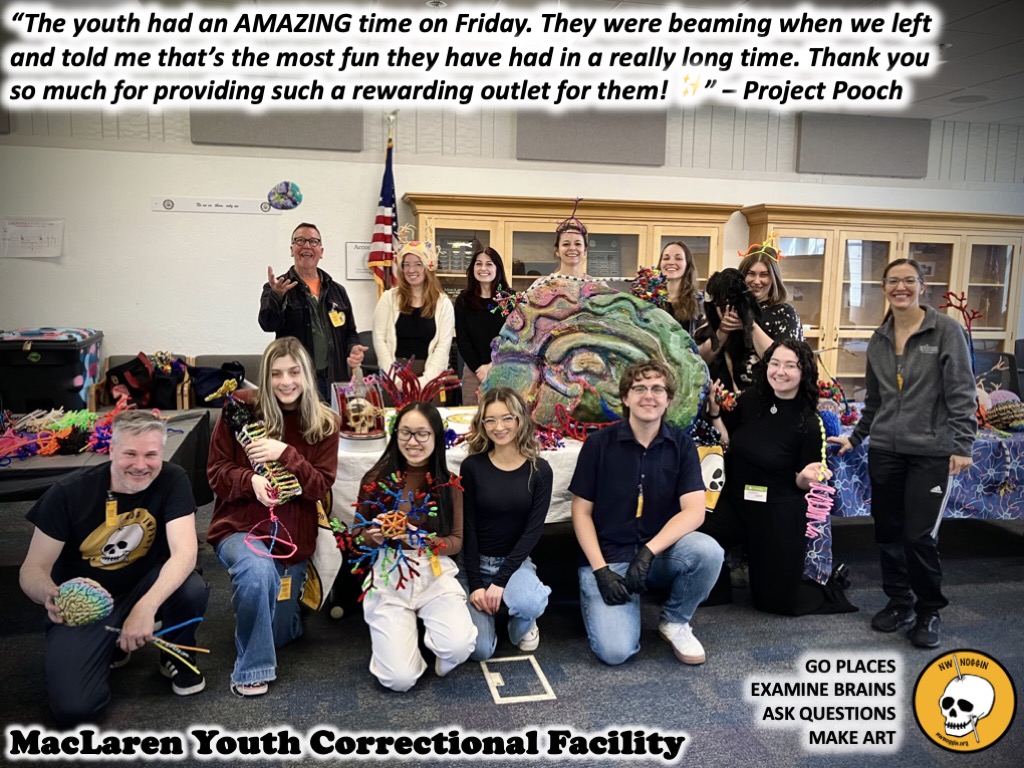
“My life has changed a lot because of helping the dogs. They’re helping me at the same time I’m helping them.”
— L.S. (Source: Project Pooch website)
LEARN MORE: Project Pooch
LEARN MORE: A Qualitative Evaluation of Project Pooch
LEARN MORE: Fear Free Shelter Program
LEARN MORE: Animal Assisted Therapy for Incarcerated Youth
LEARN MORE: Cortisol Levels of Shelter Dogs in Animal Assisted Interventions in a Prison
LEARN MORE: Dogs are more pessimistic if their owners use two or more aversive training methods
Thank you NW Noggin for welcoming me to some incredible outreach opportunities throughout the term! It was amazing to share these experiences with students and teachers, and I learned so much by engaging with our community. It’s beautiful how our love of neuroscience brings us together.


